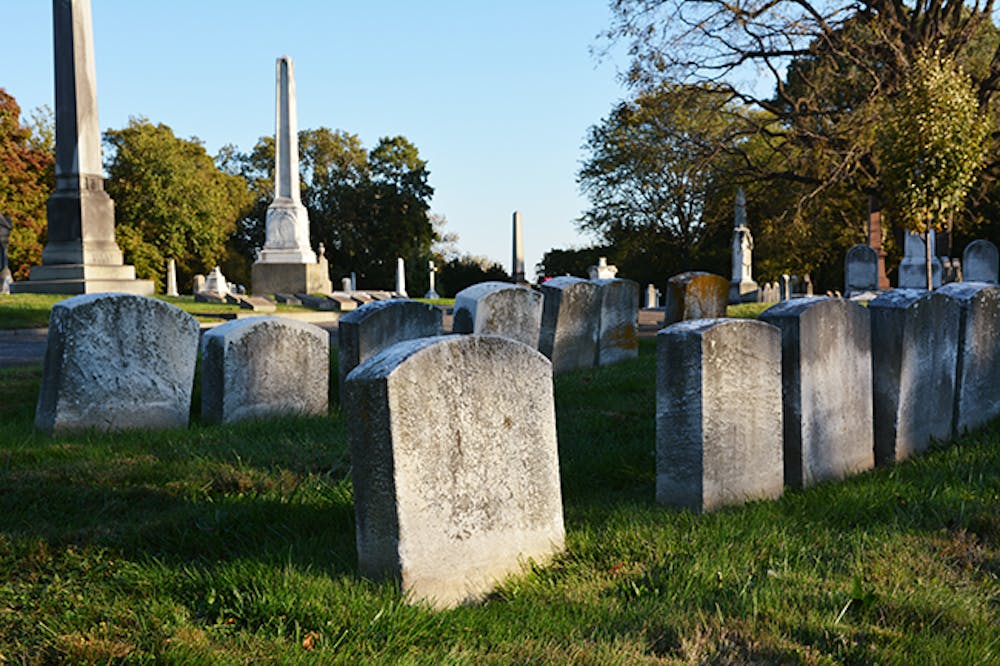Laurel Hill's elegant outdoor sculpture and picturesque landscape is a North Philadelphia horticultural gem. Unfortunately, those who reside within it can’t experience the beauty of their surroundings. They can’t experience anything anymore: Laurel Hill is a cemetery and an art site.
Laurel Hill Cemetery’s founder, John Jay Smith, conceived the cemetery with three important factors in mind: it should be in an aesthetically pleasing location well outside the center of Philadelphia, have no religious affiliation and provide permanent burial space in a serene setting.
During Philadelphia’s 19th century industrialization and population growth, Laurel Hill’s location offered urban calm. Terraced above the Schuylkill River in the neighborhood of East Falls, the area established both a secular resting place for the dead and a scenic sanctuary for the living. Laurel Hill is the second largest garden or rural cemetery in the country, home to over 33,000 monuments and 11,000 family lots. It was designated a National Historical Landmark in 1998 and has since presented itself as not only a cemetery, but also as a 78–acre landscape of art and history, hosting regular events open to the public.
The cemetery contains several notable pieces of sculpture. Most well–known is a monument to William Warner, carved by Alexander Milne Calder, the grandfather of influential American sculptor Alexander Calder. The monument depicts a woman lifting the lid of William Warner’s coffin so that his soul will be released to the heavens.
High on a hill in the southwest corner, isolated from the other monuments, sits a statue of a young woman holding her infant twins. The piece was carved by Polish sculptor Henry Dmoghowski–Saunders, the husband and father of the woman and children. The monument overlooks the spot on the Schuylkill River where the babies drowned in 1855. The mother died two years later.
The burial ground is normally quiet, creating a feeling of intimacy rather than distance despite how vast the space is. In the heart of a bustling city, the cemetery is a respite from the chaos.
This fall, Laurel Hill serves as the inspiration and focus of several visual art and literary programs. The Manayunk–Roxborough Art Center, for example, is presenting “Images & Impressions of Laurel Hill,” a series of three Sunday afternoon events featuring painters, photographers, writers and poets. Whether artists are capturing the ornately carved monuments through a lens, portraying the space’s natural beauty through an painting or reciting poetry inspired by walks around the graves, each of them encapsulates the uniqueness of this remarkable cemetery.
LAUREL HILL CEMETERY In the spirit of Halloween, Laurel Hill hosts living visitors for special events. “Hot Spots and Storied Plots” narrates the vivid history of the cemetery, packed with marble masterpieces, breathtaking views and legendary tales. Friday, Oct. 25, 10 a.m., $8. “Soul Crawl: Haunted History Halloween” is a guided flashlight tour through the cemetery. Friday, Oct. 25, 7 p.m. & Wednesday, Oct. 30, 6 p.m. Laurel Hill Cemetery is located at 3822 Ridge Avenue.







